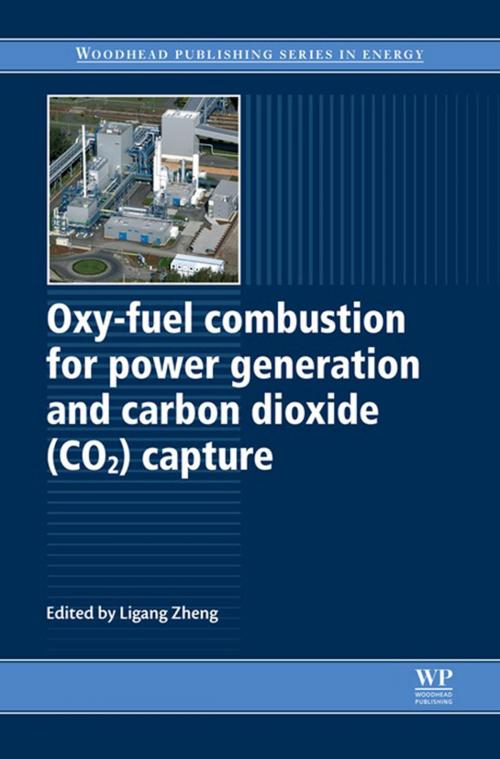Oxy-Fuel Combustion for Power Generation and Carbon Dioxide (CO2) Capture
Nonfiction, Science & Nature, Technology, Material Science, Power Resources| Author: | ISBN: | 9780857090980 | |
| Publisher: | Elsevier Science | Publication: | February 26, 2011 |
| Imprint: | Woodhead Publishing | Language: | English |
| Author: | |
| ISBN: | 9780857090980 |
| Publisher: | Elsevier Science |
| Publication: | February 26, 2011 |
| Imprint: | Woodhead Publishing |
| Language: | English |
Oxy-fuel combustion is currently considered to be one of the major technologies for carbon dioxide (CO2) capture in power plants. The advantages of using oxygen (O2) instead of air for combustion include a CO2-enriched flue gas that is ready for sequestration following purification and low NOx emissions. This simple and elegant technology has attracted considerable attention since the late 1990s, rapidly developing from pilot-scale testing to industrial demonstration. Challenges remain, as O2 supply and CO2 capture create significant energy penalties that must be reduced through overall system optimisation and the development of new processes.
Oxy-fuel combustion for power generation and carbon dioxide (CO2) capture comprehensively reviews the fundamental principles and development of oxy-fuel combustion in fossil-fuel fired utility boilers. Following a foreword by Professor János M. Beér, the book opens with an overview of oxy-fuel combustion technology and its role in a carbon-constrained environment. Part one introduces oxy-fuel combustion further, with a chapter comparing the economics of oxy-fuel vs. post-/pre-combustion CO2 capture, followed by chapters on plant operation, industrial scale demonstrations, and circulating fluidized bed combustion. Part two critically reviews oxy-fuel combustion fundamentals, such as ignition and flame stability, burner design, emissions and heat transfer characteristics, concluding with chapters on O2 production and CO2 compression and purification technologies. Finally, part three explores advanced concepts and developments, such as near-zero flue gas recycle and high-pressure systems, as well as chemical looping combustion and utilisation of gaseous fuel.
With its distinguished editor and internationally renowned contributors, Oxy-fuel combustion for power generation and carbon dioxide (CO2) capture provides a rich resource for power plant designers, operators, and engineers, as well as academics and researchers in the field.
- Comprehensively reviews the fundamental principles and development of oxy-fuel combustion in fossil-fuel fired utility boilers
- Provides an overview of oxy-fuel combustion technology and its role in a carbon-constrained environment
- Introduces oxy-fuel combustion comparing the economics of oxy-fuel vs. post-/pre-combustion CO2 capture
Oxy-fuel combustion is currently considered to be one of the major technologies for carbon dioxide (CO2) capture in power plants. The advantages of using oxygen (O2) instead of air for combustion include a CO2-enriched flue gas that is ready for sequestration following purification and low NOx emissions. This simple and elegant technology has attracted considerable attention since the late 1990s, rapidly developing from pilot-scale testing to industrial demonstration. Challenges remain, as O2 supply and CO2 capture create significant energy penalties that must be reduced through overall system optimisation and the development of new processes.
Oxy-fuel combustion for power generation and carbon dioxide (CO2) capture comprehensively reviews the fundamental principles and development of oxy-fuel combustion in fossil-fuel fired utility boilers. Following a foreword by Professor János M. Beér, the book opens with an overview of oxy-fuel combustion technology and its role in a carbon-constrained environment. Part one introduces oxy-fuel combustion further, with a chapter comparing the economics of oxy-fuel vs. post-/pre-combustion CO2 capture, followed by chapters on plant operation, industrial scale demonstrations, and circulating fluidized bed combustion. Part two critically reviews oxy-fuel combustion fundamentals, such as ignition and flame stability, burner design, emissions and heat transfer characteristics, concluding with chapters on O2 production and CO2 compression and purification technologies. Finally, part three explores advanced concepts and developments, such as near-zero flue gas recycle and high-pressure systems, as well as chemical looping combustion and utilisation of gaseous fuel.
With its distinguished editor and internationally renowned contributors, Oxy-fuel combustion for power generation and carbon dioxide (CO2) capture provides a rich resource for power plant designers, operators, and engineers, as well as academics and researchers in the field.
- Comprehensively reviews the fundamental principles and development of oxy-fuel combustion in fossil-fuel fired utility boilers
- Provides an overview of oxy-fuel combustion technology and its role in a carbon-constrained environment
- Introduces oxy-fuel combustion comparing the economics of oxy-fuel vs. post-/pre-combustion CO2 capture















